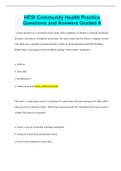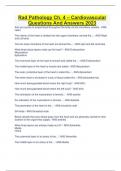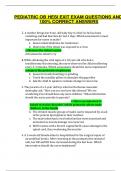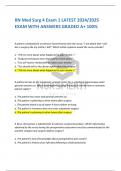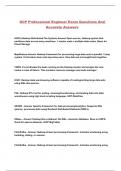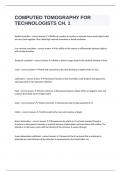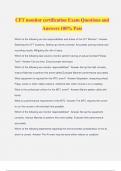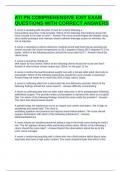Exam (elaborations)
NAPLEX Questions: ID 1 with 100% Correct Solutions Latest Update 2024
- Course
- Institution
Gram positive organisms have a thick cell wall and stain ____. - ANS-Purple or bluish Gram negative organisms have a thin cell wall and result in a ___ color. - ANS-Pink or reddish Identify the bug: gram-positive clusters (1) - ANS-Staphylococcus species Identify the bug: gram-positive coc...
[Show more]




